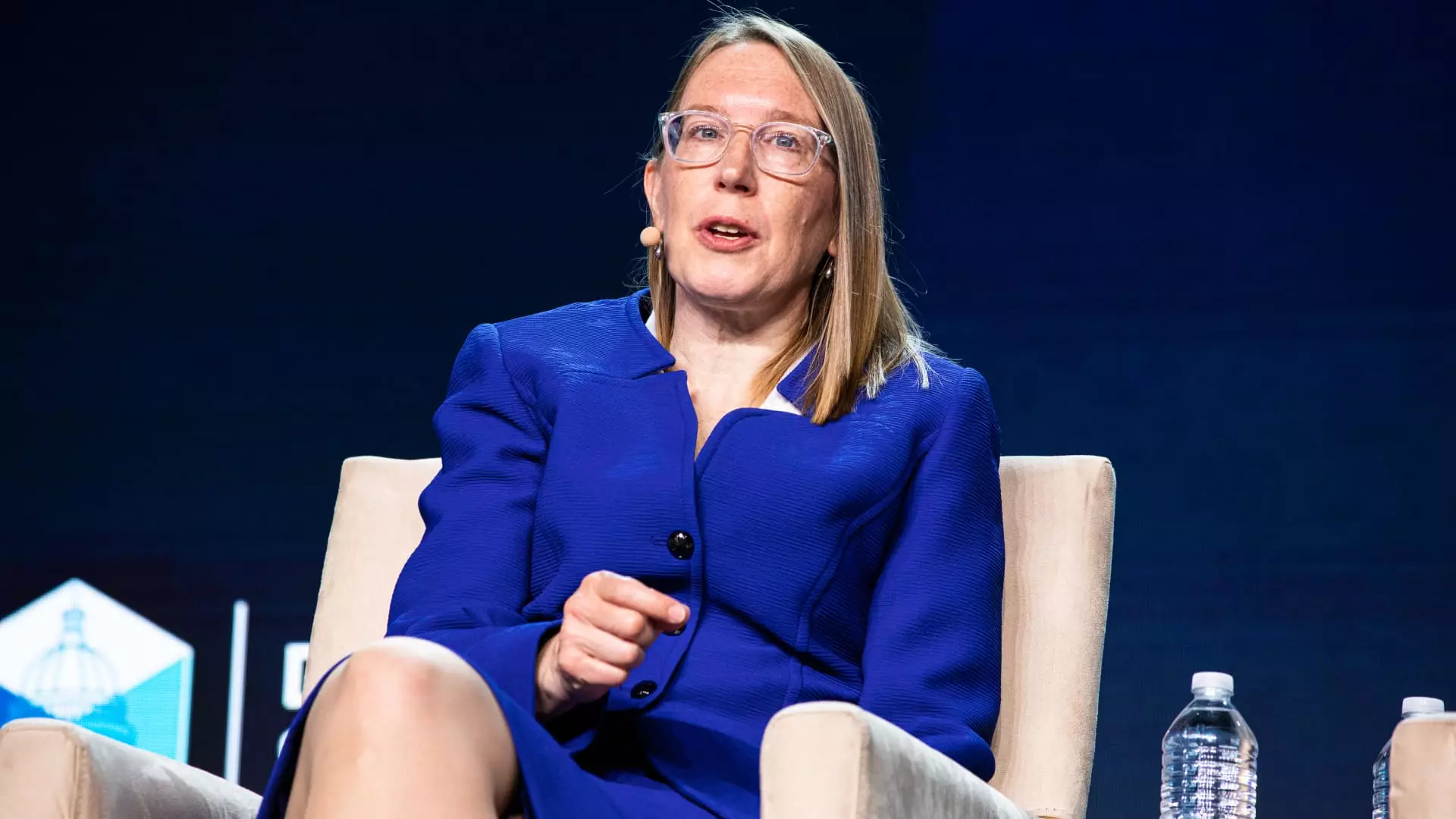In the rapidly evolving world of cryptocurrency, the recent announcements from the U.S. Securities and Exchange Commission (SEC) have sent ripples through the market, particularly with meme coins—a category of cryptocurrency often created as jokes yet gaining significant financial traction. Veteran SEC commissioner Hester Peirce has made it clear that investors shouldn’t expect any regulatory support for tokens like $TRUMP, especially since the SEC has deemed most of these items as non-securities under federal law. This policy shift signals a notable departure from previous enforcement strategies and provides a narrative that concerns potential investors of these volatile assets.
Peirce’s statement came on the heels of a considerable rise in the value of the $TRUMP coin, launched by the former president himself. The timing of this coin’s release, shortly after Mr. Trump’s inauguration in January, coincided with a market frenzy that propelled its valuation to a staggering $15 billion in mere weeks. Yet, typical of many meme coins, it subsequently plummeted, reminding participants of the inherent risks associated with speculative assets devoid of intrinsic value. The absence of SEC oversight represents a green light for investors to plunge into this unregulated terrain—but without the safety net that accompanies more traditional securities.
Meme Coins: Riding the Volatility Wave
The flash-and-fizzle nature of meme coins has drawn parallels with the mania surrounding non-fungible tokens (NFTs) in 2021. NFTs, much like meme coins, have established a market defined more by investor sentiment than by underlying assets or natural value. In Peirce’s views, the SEC failed to clarify its position on these volatile investments when interest burgeoned. A proactive stance could have educated prospective investors about the limits of SEC protection—essentially cautioning them that they were stepping into a zone with minimal oversight.
This lack of regulatory clarity raises fundamental questions about consumer safety and the responsibilities of regulatory agencies. When investors are left to navigate the unpredictable currents of markets driven by social media buzz and celebrity endorsements, the risk of significant financial loss escalates dramatically. Consequently, whether one views this trend towards deregulation as liberating or reckless could depend on their personal investment philosophy. For some, diving into meme coins might represent a thrilling gamble; for others, it might seem like an invitation to financial ruin.
Political Implications of Cryptocurrency Deregulation
Moreover, the backdrop of political maneuvering cannot be overlooked. Notably, the SEC’s pivot to a more lenient stance on cryptocurrency regulation coincides with the growing involvement of powerful political figures in this emerging asset class. With $TRUMP token serving as a focal point in Trump’s entrepreneurial endeavors, concerns have emerged over potential conflicts of interest. Several Democratic lawmakers, including Sen. Richard Blumenthal, argue that the Trump family’s crypto investments may provide avenues for foreign entities to gain access to political powers through financial means. This contentious interplay of politics and cryptocurrency inevitably fuels skepticism towards the motivations governing the SEC’s regulatory approach.
The political ramifications extend beyond Trump alone. With mega-rich figures in the crypto space, previously targeted by regulators, now reclaiming their influence, the lines between legitimate enterprise and self-serving capital interests blur further. The recent dropping of charges against Binance and its founder, Changpeng Zhao, is a testament to this trend. Critics have raised eyebrows regarding the easing of prosecutorial pressure against firms linked to political elites, leading to a debate over regulatory fairness.
The Path Forward: Navigating Regulation and Innovation
As the SEC engages in reframing its regulatory policies around cryptocurrency, a critical view emerges about the message conveyed to the market. For industry leaders and emerging investors alike, the challenge becomes finding a balance between fostering innovation and ensuring consumer protection. Peirce posits that the SEC is on a path to establish clearer guidelines that would inform both market participants and agencies. Yet, with the rapid evolution of digital currencies and tokens, one must question whether the SEC can keep pace with such a dynamic landscape.
The rescindment of outdated directives that previously restricted traditional financial institutions from engaging in crypto custody exemplifies an attempt to modernize regulations. But this raises further issues—what safety measures are being considered to protect users who participate in a market still marred by uncertainty? As the SEC contemplates the fine line between innovation and accountability, the journey ahead must prioritize clarity for investors who currently find themselves in a high-risk market devoid of regulatory safeguards.
Navigating these shifting sands will require vigilance, both from consumer advocates and the agency itself. As it stands, the spectacle of meme coins like $TRUMP encapsulates the dual narratives of promise and peril, making the future of cryptocurrency a compelling, if uncertain, domain to observe.


Leave a Reply